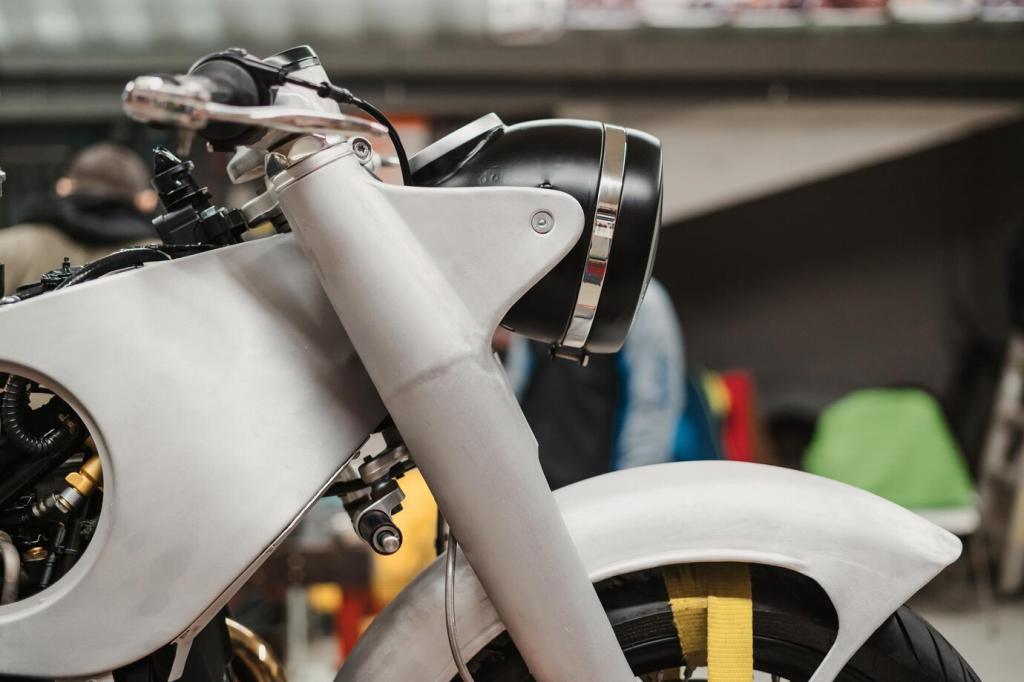Your Ultimate Kit: Essential Tools for Electric Scooter Repairs
Chosen theme: Essential Tools for Electric Scooter Repairs. Welcome to your pit lane for smarter fixes, safer rides, and fewer surprises. From precision instruments to street‑ready essentials, we’ll show you exactly what to stock, why it matters, and how each tool turns frustration into confidence. Dive in, compare notes, and subscribe to stay updated on practical kits, real-world fixes, and expert tips tailored to your scooter’s needs.

Toolkit Blueprint: Building a Reliable Repair Arsenal
A dependable digital multimeter quickly reveals battery health, controller voltage, and charging anomalies. Learn to check resting voltage, under-load drops, and continuity across connectors. With a few practiced tests, you’ll separate a dead cell from a loose lead in minutes. Comment with your favorite multimeter tricks or questions, and we’ll add them to our community checklist.
Toolkit Blueprint: Building a Reliable Repair Arsenal
Scooters rely on small fasteners threading into aluminum. Over-tighten once and you can strip the frame; under-tighten and bolts wander loose. A 1/4-inch drive torque wrench with a proper range preserves threads and bearings. Keep a simple torque chart taped inside your toolbox, and share your model’s specs in the comments so others can benefit.


Safety First: Gear That Saves Projects and Skin
Gloves That Keep Grip and Feel
Nitrile-coated mechanic gloves guard your hands while preserving dexterity for fiddly connectors and tiny screws. They also improve grip on wet tires and reduce slips that scratch frames. Keep a cut-resistant pair for brake rotors. What gloves do you trust in summer heat or winter garages? Share recommendations to help the community choose wisely.
Eye Protection for Unexpected Springs and Splashes
A brake spring can ping without warning, and old tubeless sealant loves to fly. Lightweight safety glasses prevent a simple fix from becoming an emergency. Anti-fog lenses help during soldering or cold-weather work. Drop us a line about your close calls, and remind a friend to wear eye protection before their next tire swap.
ESD Wrist Strap for Sensitive Electronics
Controllers and BMS boards dislike static shocks. An anti-static wrist strap clipped to a grounded point protects tiny components while you probe, solder, or swap parts. Pair it with a non-conductive mat for best results. Curious about safe handling? Ask below—our next post will dive deeper into controller care and common static mistakes.
Electrical Essentials: Diagnose, Test, and Restore
Flexible silicone leads with alligator clips let you secure probes while freeing both hands. A continuity tester quickly identifies broken wires, corroded connectors, and misrouted harnesses. Label each connector as you test to build a map for future troubleshooting. Have a clever labeling system? Share it, and help others work cleaner.

Fasteners and Frames: Keep It Tight, Never Stripped
Vibration loosens bolts, but the right threadlocker keeps stems, clamps, and caliper mounts secure. Use medium-strength on parts you’ll revisit and avoid high-strength where aluminum threads can suffer. Always degrease first. Share which bolts on your model need threadlocker most, and we’ll build a living reference list.
Steel bolts into aluminum love to gall and seize. A tiny smear of anti-seize on pedals, axle nuts, or deck fasteners prevents future heartbreak. It also helps maintain accurate torque readings. Tell us where anti-seize saved your weekend, and help another rider skip the drill-and-pray scenario.
Stripped threads happen, even to careful mechanics. A helicoil or threaded insert kit can restore strength to stems, decks, and motor housings. Measure twice, drill once, and follow the insert depth precisely. If you’ve resurrected a stripped clamp, share your process so others gain the courage to try.

Real-World Wins: Stories Powered by the Right Tools
A rider feared a dead controller after a storm. A multimeter and contact cleaner told another story: voltage fine, corroded throttle connector failing under wiggle. Ten minutes later, clean pins, dielectric grease, and a triumphant commute. Have a similar save? Drop it in the comments and help someone dodge a costly misdiagnosis.


Real-World Wins: Stories Powered by the Right Tools
Endless squeal vanished when a truing fork straightened a barely bent rotor, and alignment cards centered the caliper. A quick torque pass locked the fix. The rider called it “the quietest ride of my life.” Tell us your most satisfying silence, and subscribe to our brake-tuning deep dive coming next week.
